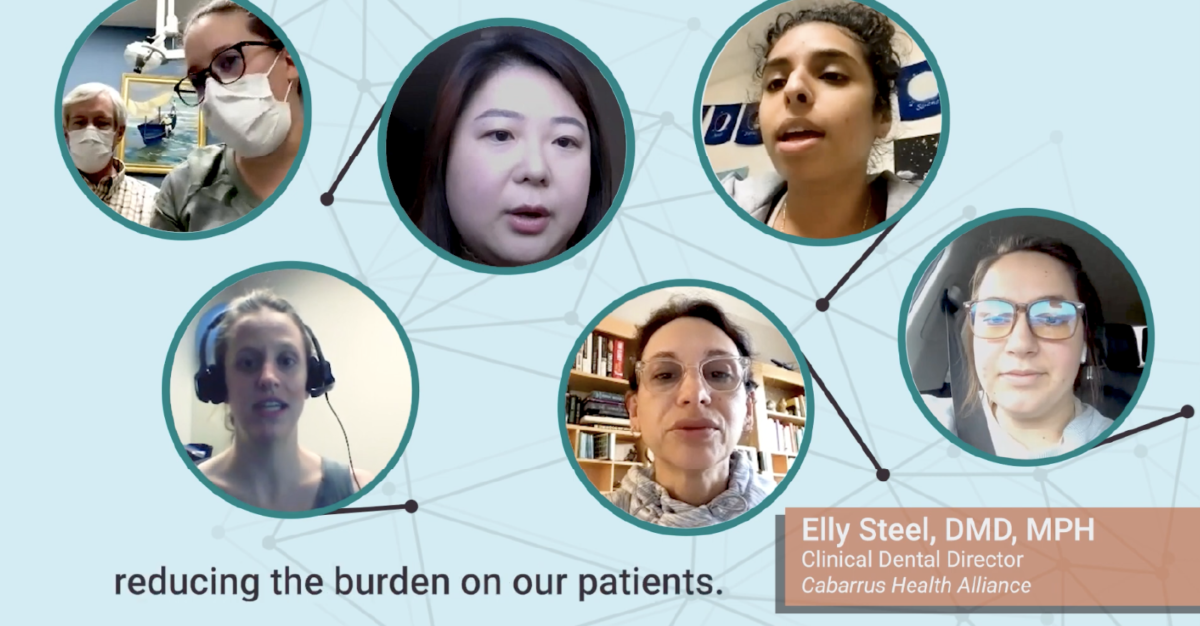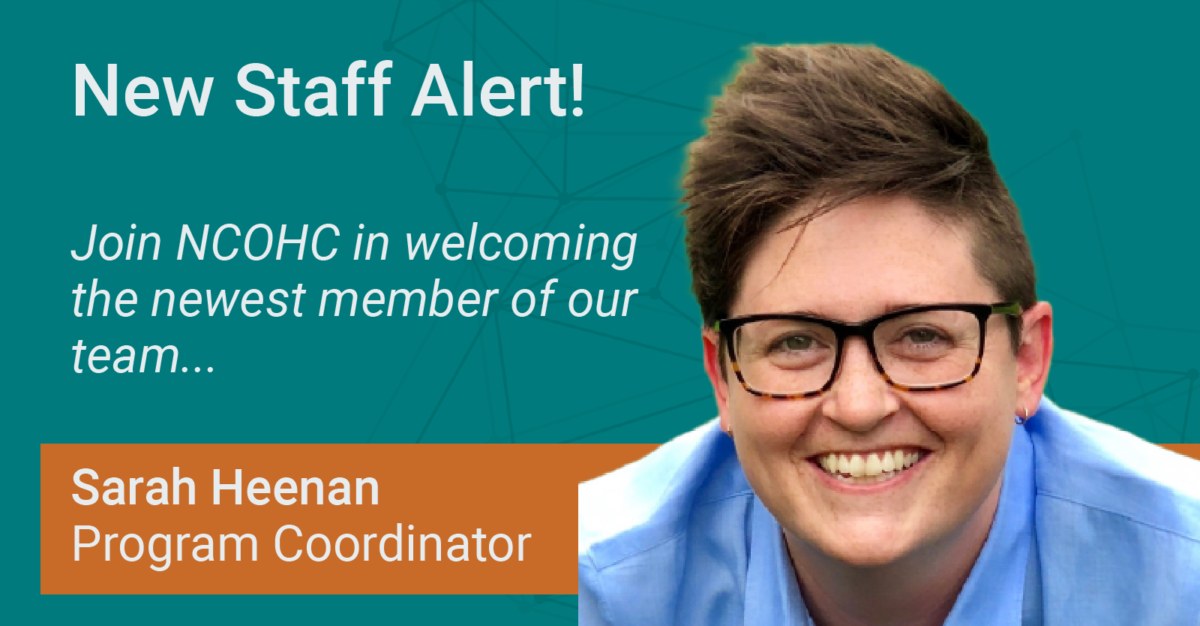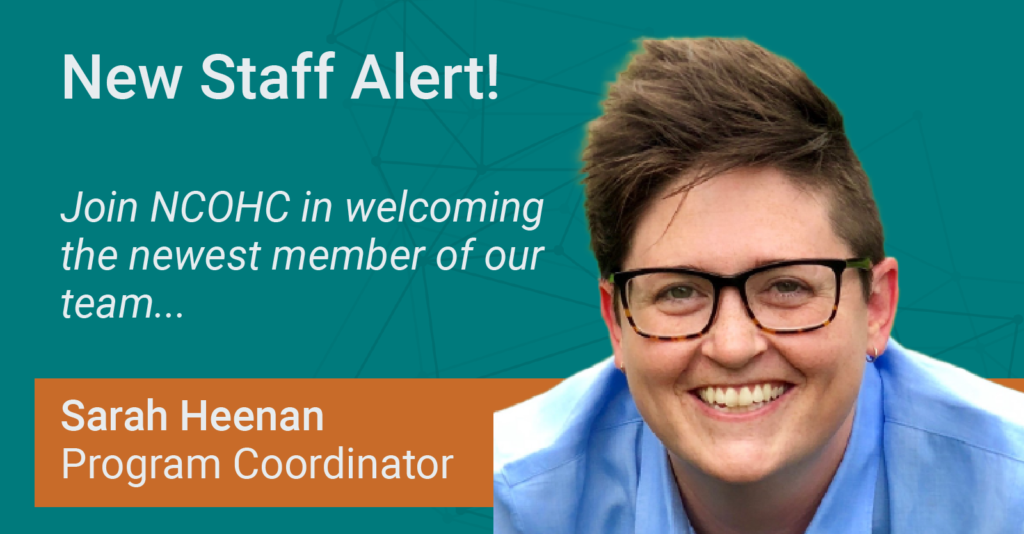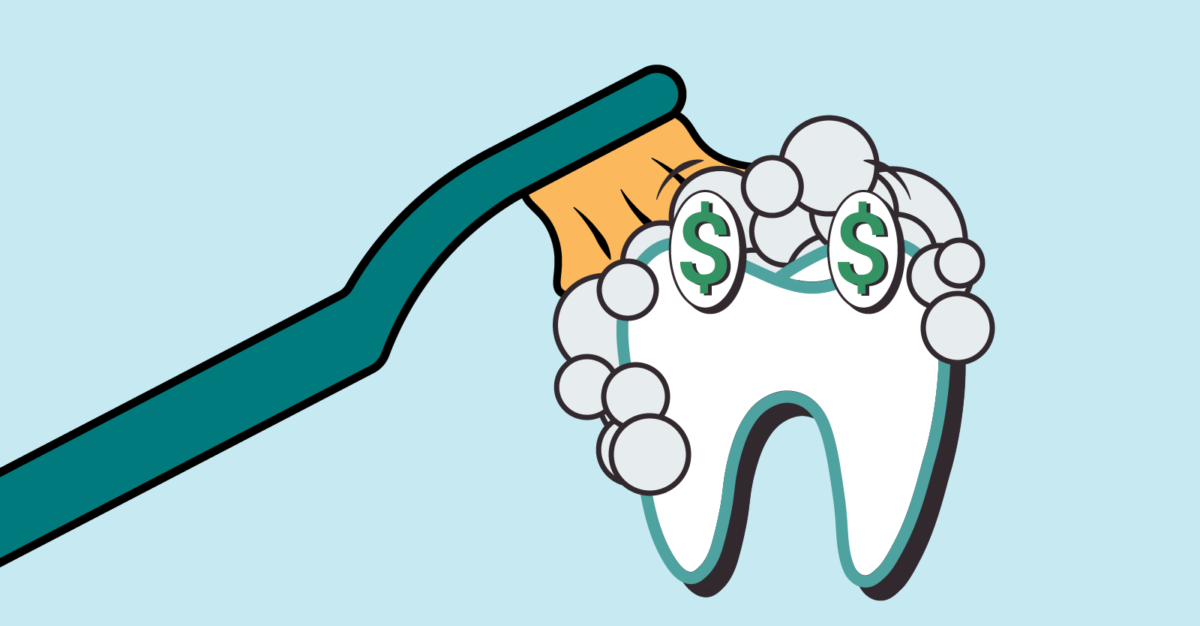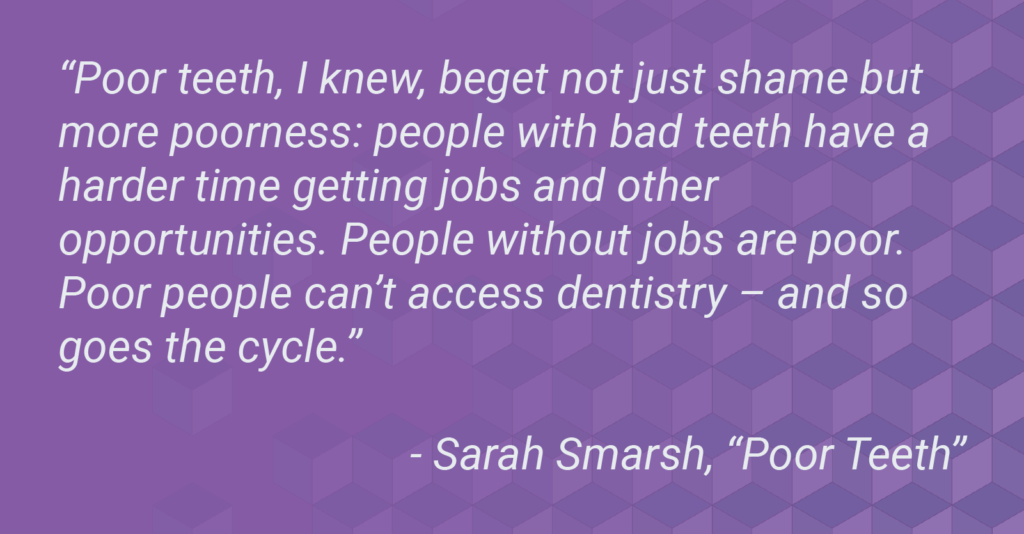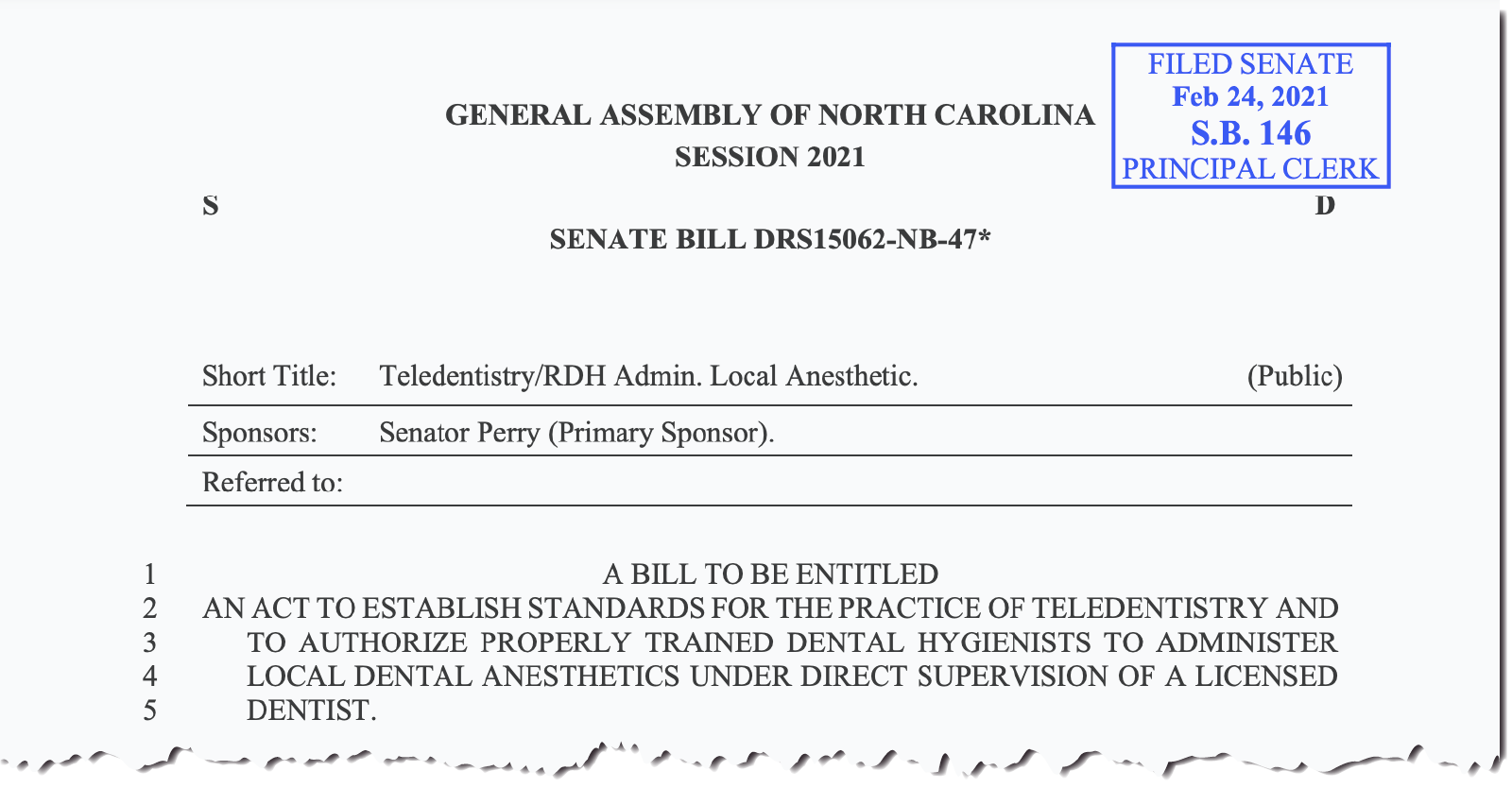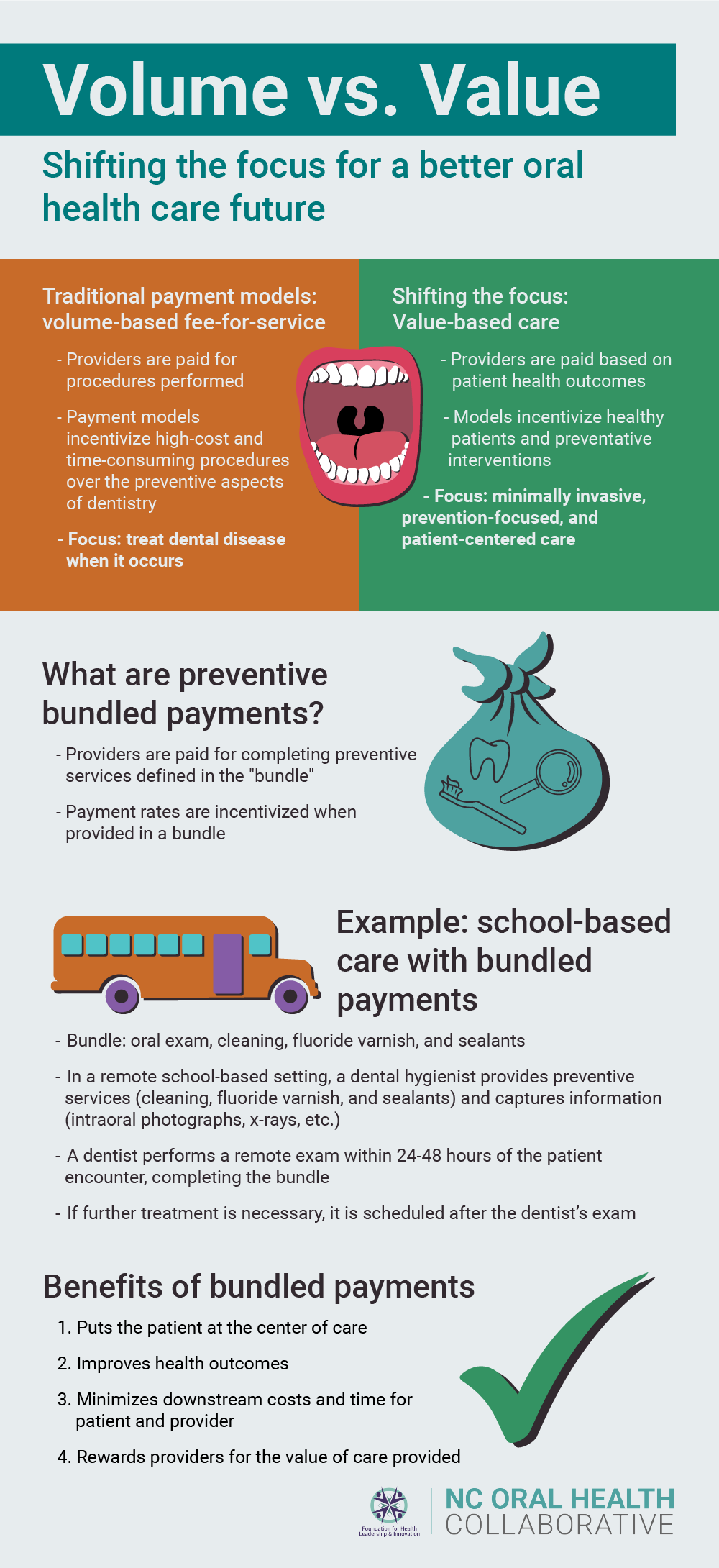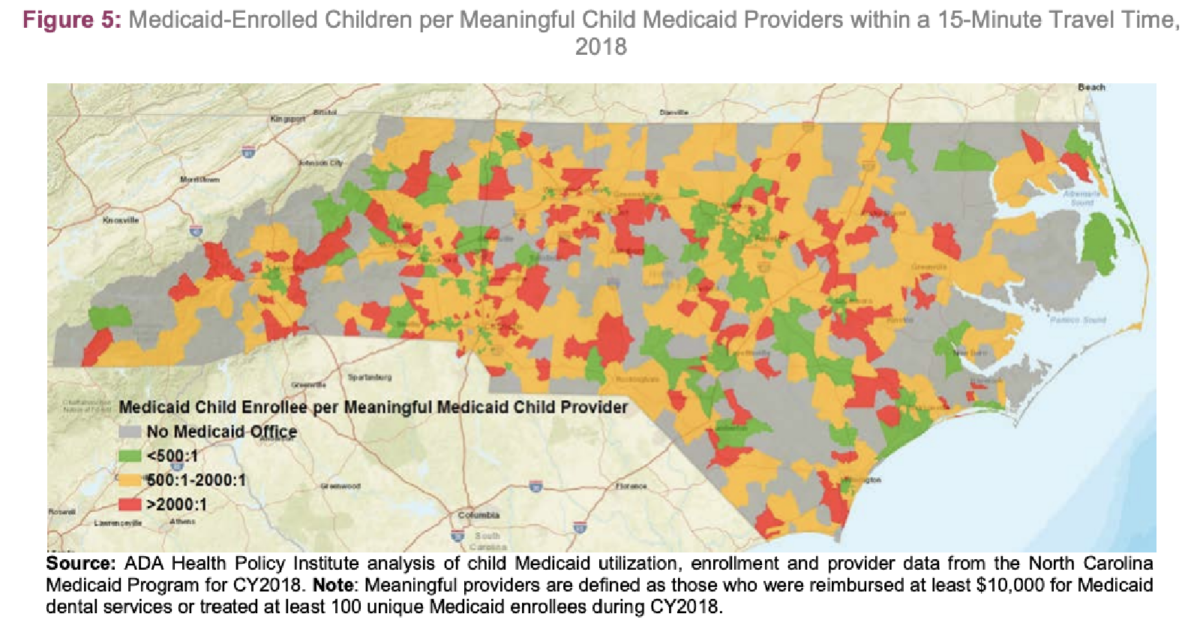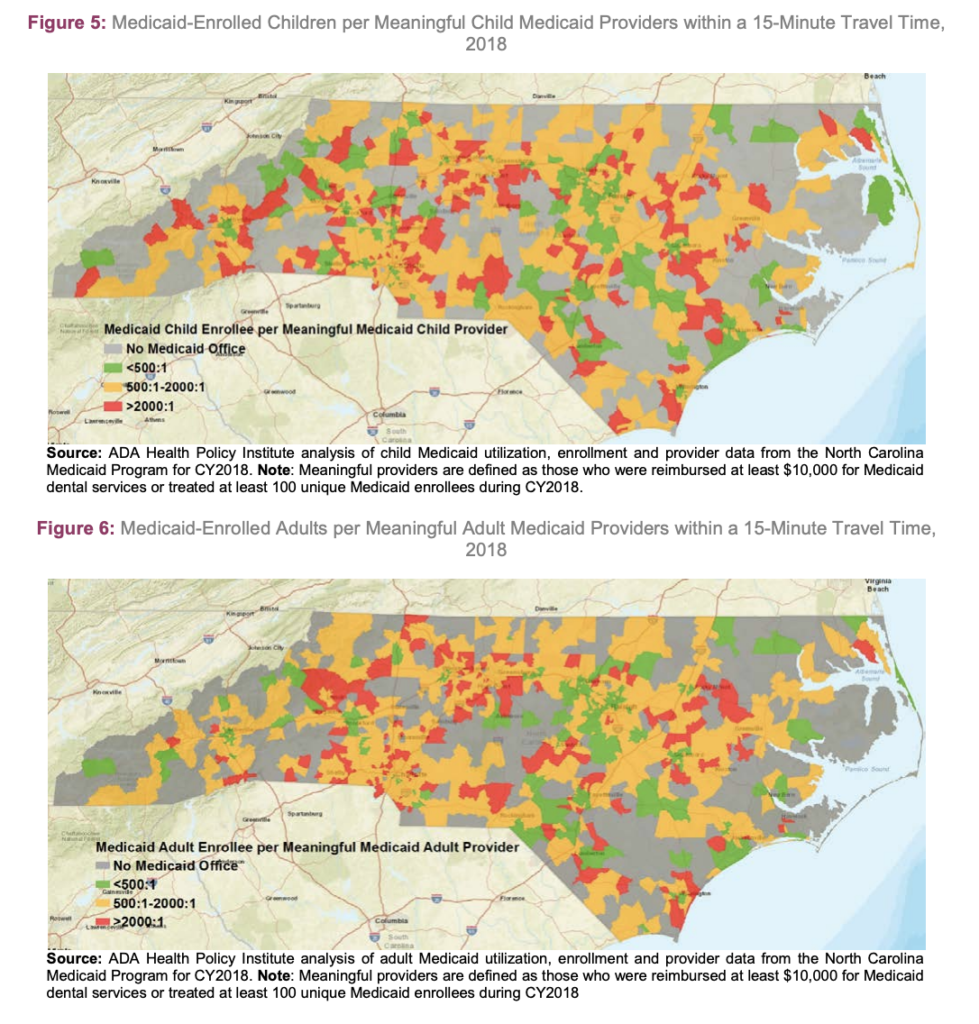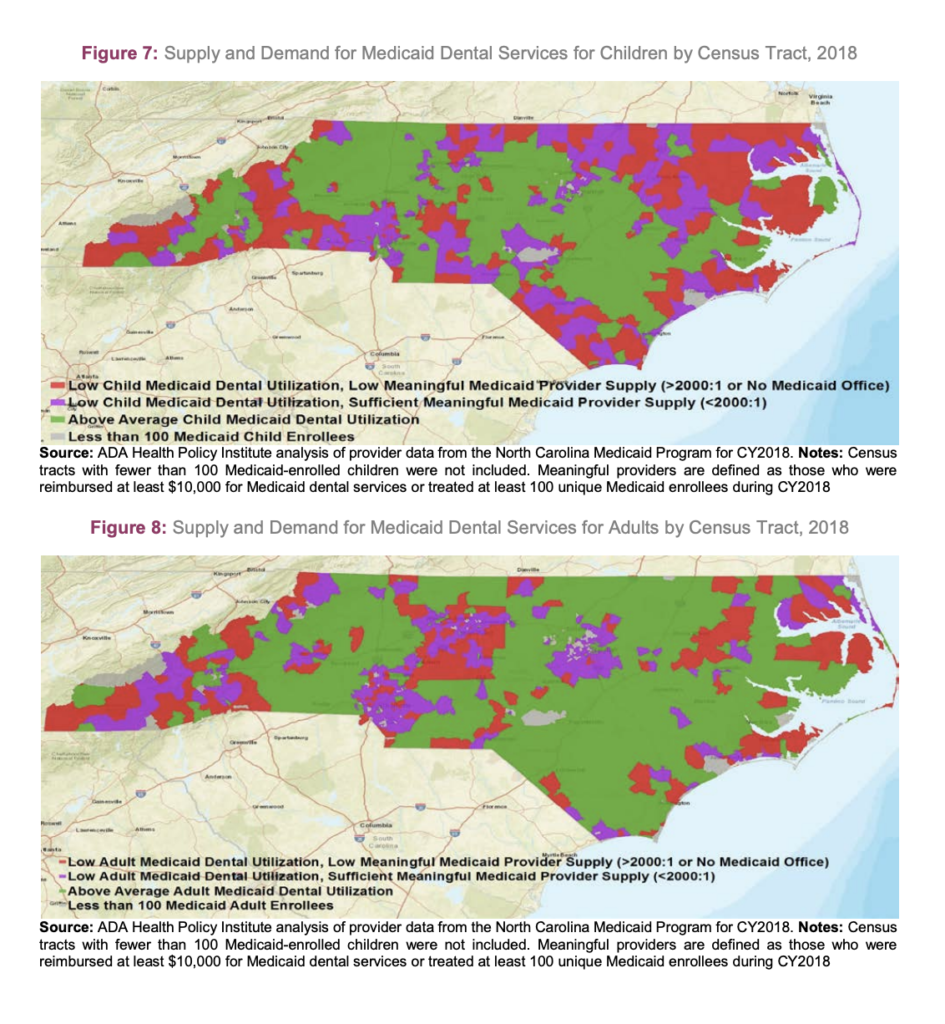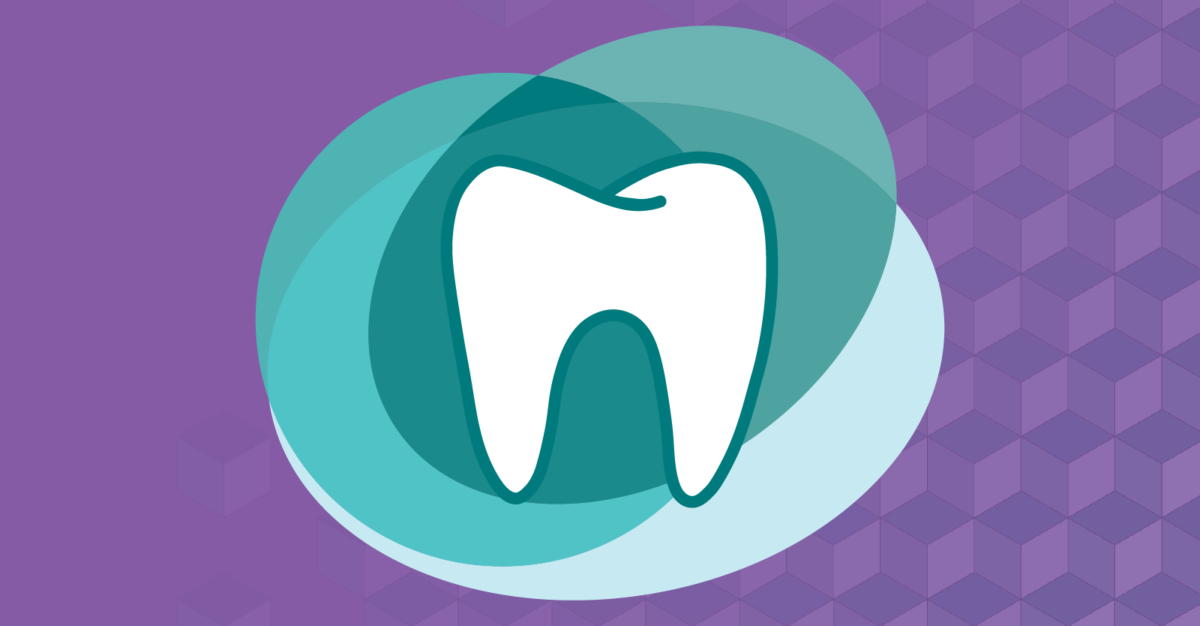In order to build a more equitable oral health care system for all North Carolinians, it is paramount to pursue policies that encourage the development of a more diverse oral health care workforce.
The pursuit of equity can’t only focus on the patient side of the equation—those who either can or cannot access the care they need. The dental profession has historically struggled with equity, both among patients being able to access the care they need, and among those who train and enter the industry as dentists and other oral health professionals.
White males still represent the majority of dentists, while white females have long dominated the dental hygiene profession. Disproportionate representation by race, ethnicity, and gender is especially predominant among North Carolina dentists and hygienists.
In this blog post, we’ll take a look at the current demographic makeup of the oral health care workforce in the U.S., and in North Carolina specifically. We’ll discuss why provider diversity is so critical and outline potential policy solutions for developing a workforce that looks like the patients it serves.
The Importance of Diversity in the Oral Health Care Workforce
Why does diversity in the oral health care workforce matter?? The answers are many. Research suggests that more diverse racial, ethnic, and gender representation among dental providers can dramatically reduce barriers to access for the underserved and improve oral health care utilization and outcomes.
“Increasing diversity in the dental workforce is more than just the right thing to do,” said Dr. Zachary Brian, director of the North Carolina Oral Health Collaborative. “Its positive impact is also backed by evidence, with greater provider diversity helping increase access and improve utilization and outcomes, particularly for our most underserved communities.”
Beyond clinical outcomes
Diversity among dentists can help build equitable communities
Equity on the employment side of oral health care in and of itself will play an important role in increasing equity in society as a whole. In a previous NCOHC blog post, we spoke with Jen Zuckerman from the Duke World Food Policy Center. Zuckerman pointed out that equity pursuits in any industry shouldn’t be seen as solely aimed toward those able to access the industry’s services or goods.
Those pursuing equity should also ask who is financially benefitting from a given industry. What communities are benefiting from generational wealth accrued by those employed in that industry? For too long throughout American history, communities of color across the board have been structurally left out of many, if not most, opportunities to build generational wealth. From the GI Bill and red lining to college admissions, loans, and more, “the white community has continually gotten investment through policies, programs, and initiatives,” said Zuckerman. “And communities of color have continually gotten programs and services, which do not build wealth.”
At the end of the day, policies that would allow underserved communities to access care are vital, but the numerous social determinants of health that limit access in the first place must be structurally weeded out, too. Income is one incredibly important determinant of health that more diverse employment in high-paying industries like dentistry can significantly impact.
Racial Diversity: A Means to Improve Access, Utilization, and Outcomes
A recent report by the Oral Health Workforce Research Center found that “Improving the racial and ethnic diversity of the nation’s dentists is critical in efforts to reduce disparities in access to care and health outcomes and to better address the oral health needs of an increasingly diverse U.S. population.”
Research shows that dental health is worse in communities of color, and it has also been demonstrated that patients are more comfortable receiving care from a provider of their own race.
The impact of systemic and interpersonal racism on oral health care is also frequently overlooked: a 2019 study found that “dental visits were less common among those who reported racial discrimination while using the healthcare system or reported emotional impact of discrimination than those who did not.” The same study concluded that “those who experienced the emotional impact of racial discrimination were 25% less likely to have visited the dentist in the past year than those without such experience.”
Studies have also determined that non-white dentists care for a disproportionate number of at-risk patients in minority and underserved communities. Researchers have found that 53 percent of clinically active Black dentists reported primarily treating underserved patients at their primary practice, and another study concluded that “the Hispanic/Latino (H/L) dentist workforce is a critical component of our dental delivery system and is shown to contribute to improved access for H/L populations and underserved populations.”
Increasing racial diversity within the oral health care workforce is therefore imperative for eliminating access barriers, increasing utilization, and improving outcomes.
Gender Diversity: Increasing Access and Offering New Perspective
While there is less research concerning patient preference regarding provider gender (although we can reasonably infer an effect similar to the one revealed in studies on provider race), female dentists are noted for bringing different perspectives and approaches to the practice of dentistry.
For one, studies have shown that female dentists are more likely than male dentists to practice in urban and public health settings, and they are more likely to treat lower-income patients. These findings suggest that increasing gender diversity in the oral health workforce has the potential to improve access to care for our most vulnerable.
Research also suggests that female dentists may be better at encouraging preventive care than their male counterparts. A study published in the Journal of the American Dental Association found that “female dentists recommended at-home fluoride to a significantly larger number of their patients than did male dentists” and “female dentists also chose to use preventive therapy more often at earlier stages of dental caries.”
There is no question that female dentists bring a fresh perspective to a profession long dominated by men. Writing about the increase in female dentists, Dr. Cindy Roark, a dentist herself, notes in an article for Dentistry Today that “at its most basic level, a diverse leadership team means a healthcare organization will naturally have a greater understanding of the populations it serves.”
Where Do We Stand Today? Diversity Among Dentists and Hygienists
By Race and Ethnicity
People of color are greatly underrepresented among the dentist and hygienist workforces. A 2016 study by the American Dental Association’s Health Policy Institute (HPI) found that just 26.4 percent of U.S. dentists were non-white, despite people of color representing 38.7 percent of the total population.
The disparity is even more stark in North Carolina, where according to a recent study, 81.5 percent of dentists are white, despite white people representing only 64.1 percent of the population. Even more disproportionate, North Carolina’s dental hygienists are 92.5 percent white.
Recent trends are more encouraging. According to HPI, “from 2008 to 2018, the percentage of active white dentists [in the United States] decreased from 78.2% to 71.9%.” While Asian and Hispanic dentists made gains, however, alarmingly, the percentage of Black dentists was relatively unchanged.
By Gender
In addition to being disproportionately white, U.S. dentists are mostly male. According to data compiled by the American Dental Association (ADA), in 2020, 65.5 percent of professionally active dentists were male. Women made up just 35.5 percent. Data derived from the North Carolina State Board of Dental Examiners (NCSBDE) shows that the gap is narrowing in our state, but the disparity remains pronounced.
Among dental hygienists, the gender divide is flipped. While up-to-date data for practicing dental hygienists is hard to come by, the American Dental Education Association (ADEA) reports that 94.7 percent of students currently enrolled in an accredited dental hygiene program are female.
Opportunities for Growth: Supporting Diversity in the Dental Workforce
There is no silver bullet to improve racial and gender diversity in the oral health care workforce. That said, there is no shortage of common-sense, evidence-based policies to help bridge existing gaps and build a dental workforce reflective of the people it serves.
We’ll focus on just two such opportunities in this blog post: early educational interventions and improved recruitment efforts by dental schools.
Early Educational Interventions
Limited awareness of oral health care career opportunities and lack of support for early education and “pipeline” programs present significant barriers to racial minorities and women entering the dental workforce.
Pipeline programs in particular — which provide all-inclusive support in the form of mentorship, scholarships, externships, and/or other opportunities — are fundamental in helping introduce minority students and those from underrepresented communities about dental career opportunities.
Notably, a dental pipeline program funded by the Robert Wood Johnson Foundation made initial grants to 11 dental schools to support community-based education related to opportunities in dentistry for minority and low-income students. A less comprehensive but similar “Saturday Academy” program organized by the NYU School of Dentistry introduces underrepresented minority and low-income high school students to dentistry as a viable career option and offers mentorship.
Policymakers should consider support for similar programs in order to attract a new generation of diverse students to dental education and oral health care careers.
Dental School Recruitment
No less important than efforts to introduce minorities and women to career opportunities in dentistry are dental schools’ own recruitment policies. For too long, dental schools have done little to proactively seek diverse pools of applicants, let alone admit classes that reflect the populations they will one day serve. Researchers have recently noted that “U.S. dental schools’ admission practices present a critical gateway to increased diversity, but the current pipeline of qualified minority applicants is insufficient.”
This is not to say that change isn’t happening. Many dental programs — including North Carolina’s own UNC Adams School of Dentistry and East Carolina University School of Dental Medicine — have taken steps to increase diversity in their dental programs. Data indicate that North Carolina’s dental students more closely mirror the state’s racial composite than does the dental workforce itself. An analysis of dental classes graduating 2015-2019 showed that 36 percent of UNC dental students were non-white, as were 28 percent of ECU dental students.
Potential opportunities to increase recruitment of minority, women, and otherwise underrepresented students by dental schools include, but are not limited to:
- Increasing diversity on the interviewing and admissions teams/committees
- Increasing diversity among faculty and staff
- Emphasizing cultural competency in dental curriculum
- Support for dental pipeline programs
- Mentorship opportunities
- Increased financial assistance and scholarship opportunities
In Conclusion: Moral and Practical Imperatives for Diversity in the Dental Workforce
Policymakers have both moral and practical imperatives to increase diversity in the dental workforce. The cause is just, and the science is clear: racial and gender diversity among oral health care providers increases access and improves both utilization and outcomes.
If we are to build a more equitable and accessible oral health care system for all, it is critical that we support the development of a workforce that reflects the populations it serves.
The North Carolina Oral Health Collaborative (NCOHC) is actively working with stakeholders across North Carolina to help develop a more diverse oral health care workforce. For more information on NCOHC and to get involved, please become a member of our advocacy platform, NC4Change — membership is free and there are many opportunities to engage with our work. Together we can build a more equitable and accessible oral health care system for ALL North Carolinians.



